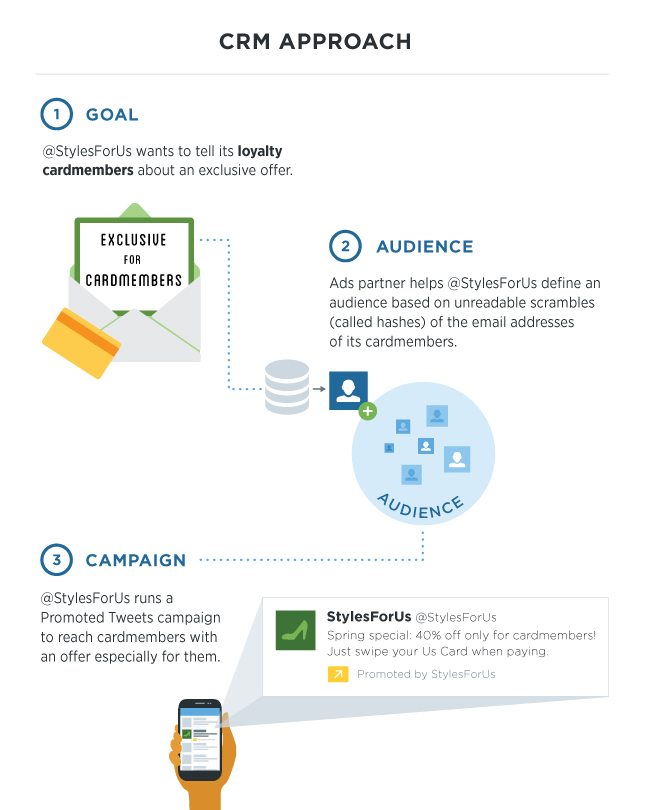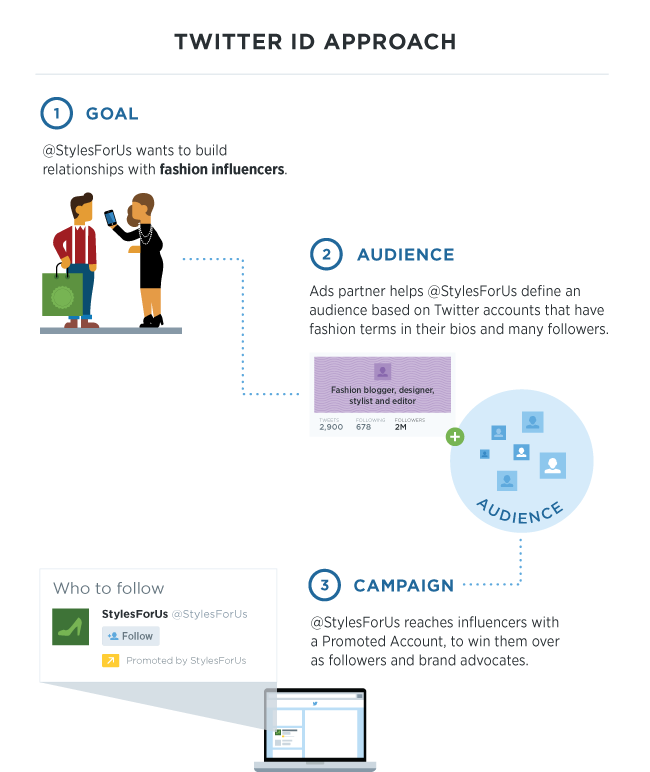Twitter has launched a new way for businesses to leverage existing databases to better target potential customers on the fast-growing microblogging network.
For the first time, businesses can target consumers based on existing email lists, either from their own or from an ad partner.
This will allow businesses to specifically target consumers who have shown prior interest, purchased products before or have asked to be contacted. For example, a clothing retailer that wants to promote a spring sale to its existing customer base can now direct twitter ads specifically to current cardholders. Twitter takes the existing email lists and matches that information to Twitter accounts in order to show the matched users a Promoted Tweet with the sale information.
Twitter is not limiting its new tailored audiences to existing databases. Businesses can now use Twitter’s user base to create new lists of potential customers. For example, the same retailer above may want to target every Twitter user who has the word shopping in their public bio, or someone who uses the word shopping often in tweets, or someone who follows certain verified clothing store accounts. Now, businesses can create a user list using those specifications to create a tailored audience and show that group promoted tweets.
Allowing targeting based on existing email lists is new to Twitter, but not new to paid social media ads. In 2012, Facebook released “Custom Audience ads”, which allow ad targeting to lists of email addresses. Custom Audience ads let businesses give lists of names or Facebook ID numbers to Facebook and use those lists to target with specifically messaged ads.
How Marketers Can Use Targeting
The question for businesses is how can these types of ads increase sales? The answer is, by being able to target customers more efficiently, businesses can tailor ads to be more effective based on who’s seeing them.
For example, a car company will be able to target previous customers based on what they purchased. Someone who purchased a truck 5 years ago will see an ad specifically made for people who might be looking to buy a new truck, while someone who purchased an electric vehicle will only be shown ads about fuel efficient options.
Other applications include businesses targeting loyal clients for premium services while pushing discounted services to new clients. Businesses can also push specific products based on what customers have bought before; such as pants that match a shirt or the newest addition to a Lego collection a customer has already started. Of course, for businesses to target based on this type of data, businesses will have to already have it available. Without having a deep well of information, businesses are limited in targeting options.
For marketers, these tools allow for more efficient paid social media and paid advertising campaigns. By targeting more efficiently, marketers can increase their CTR, and in turn, their conversion rate. These audience specific ads could also be combined with email advertising to be part of a re-targeting campaign. By being able to specifically target existing customer bases, marketers can go after an audience it knows has the ability and the desire to spend money on their product, thereby boosting sales.
The article above was originally published on MuddyWall.com.

